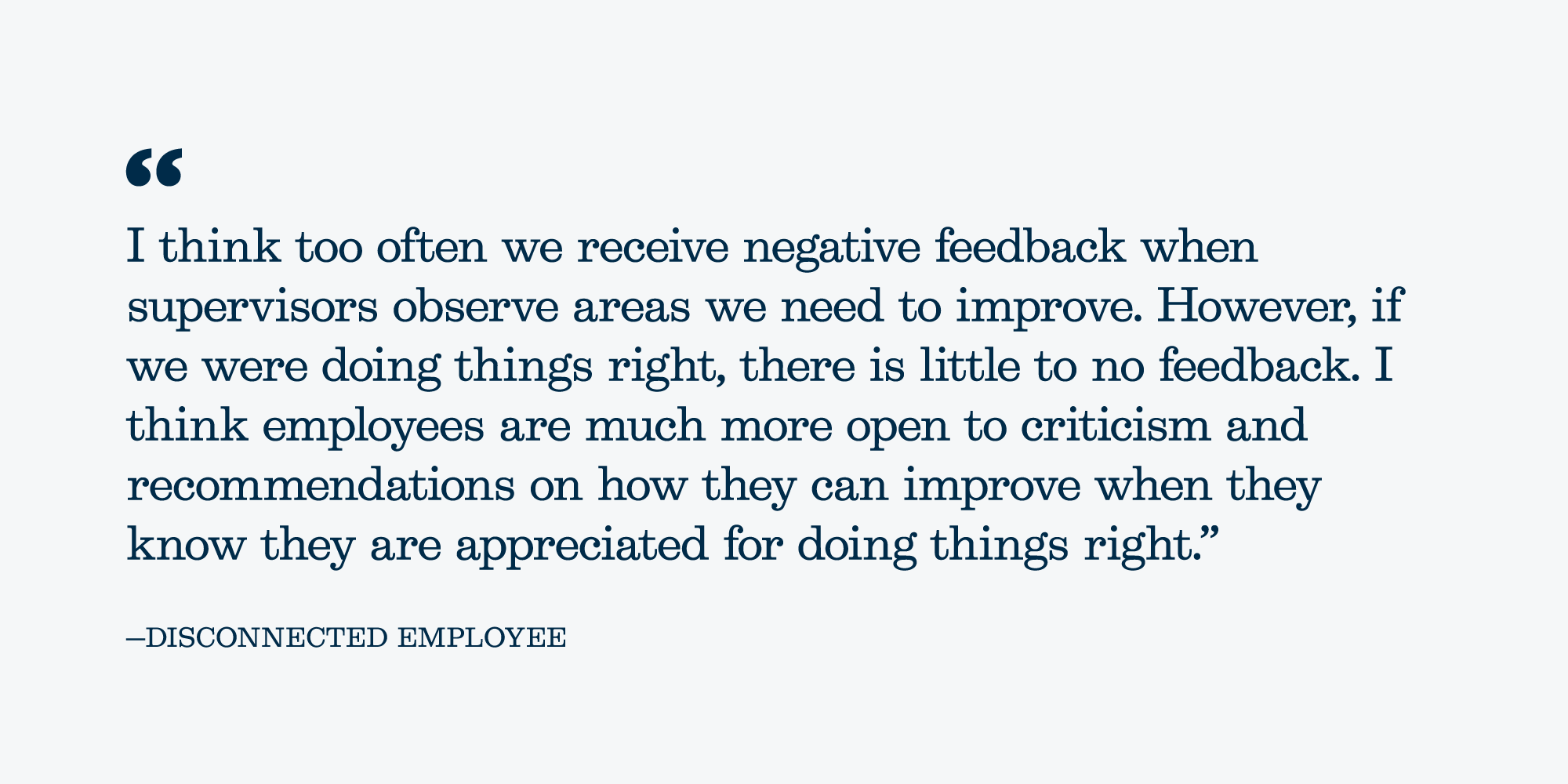Mistakes To Avoid When Building A More Connected Workforce


- Author: Meghan Stewart
Even if your organization is adept at cultivating employee connections, there may still be aspects of your culture that hinder long-term success. In fact, our research reveals that more employees feel disconnected than connected in the workplace. Though there’s no one-size-fits-all solution to boosting employee connections, there are likely some additional steps you can take to make progress.
3 Employee Connections Mistakes to Avoid
Improving workplace connections delivers several benefits, including higher employee engagement, retention, and loyalty. To achieve these benefits, it’s essential to create an environment where employees feel valued, trusted, and aligned with your organization’s values and goals. As you work to accomplish this, you’ll need to watch out for these common missteps:
1. Poor delivery of constructive feedback
Of course, balanced feedback is necessary for performance improvement and skill development. However, if constructive feedback is delivered improperly or heavily outweighs the positive, employees may feel judged and unappreciated. This, in turn, hurts their ability to feel connected with their manager and others. Our latest employee connections study found that only one in three Disconnected Employees see value in constructive criticism, and this sentiment is echoed in their comments. One Disconnected Employee said,

For constructive feedback to be impactful, it must be delivered effectively and received with openness. You can achieve both by:
- Training managers to become more confident in giving balanced feedback effectively
- Creating an environment where employees see constructive feedback as positive and beneficial to their career growth
- Offering employees diverse avenues for receiving feedback, including mentorship and peer-to-peer feedback
2. Not communicating with transparency
Celebrating wins is essential, but if you only share the good news and aren’t transparent about less positive developments, employees are likely to feel insecure, ignored, and less connected. An excellent example is layoff communications. Our study found that Disconnected Employees are more likely to feel unsupported during layoffs, with poor communication cited as a common cause. Comments included:
- “[Company management] doesn’t talk much about layoffs, so we don’t know details. That makes people think more are on the way.”
- “[My company] didn’t communicate any sense of security to those who were left in their current roles and for those who were not laid off. They left a lot of worry and doubt amongst the employees that remained.”
- “There was no transparency and the whole company operated in secret. No one ever knew when more layoffs were coming and it felt ominous for several months.”
Instead of holding bad news close to the vest, develop diverse communication methods that keep employees informed and provide an outlet for discussion. Examples include one-on-one meetings, team discussions, themed offsites, and all-company meetings.
3. Micromanaging employees
It’s no secret employees today want more flexibility, whether in the form of remote work options or how they manage their time. However, micromanagement hinders that flexibility by limiting employees’ autonomy in how and where they work. In one survey, employees named micromanagement the number one workplace “red flag.”
Our latest study found that micromanagement also limits employees’ ability to feel connected at work. While Connected Employees described their organization’s culture as positive, connected, and engaging, Disconnected Employees said theirs was micromanaged and demanding. By providing greater flexibility and trusting employees’ capabilities, you can help those who feel disconnected become more connected and empowered in their work. One employee summed it up like this: “[Connection is] feeling like what I do matters to my coworkers, to my department, and to my organization, and that they understand I’m a regular person with regular problems and trust me to do what needs to be done at work and in my personal life.”
Enjoy the Benefits of a Connected Workforce
Employee connections are the glue that holds your workforce together and enables better employee experiences at work. For additional insights on common pitfalls and proactive actions you can take to boost these connections, read the full employee connections report and contact us to discuss how Ingenuity can help.


